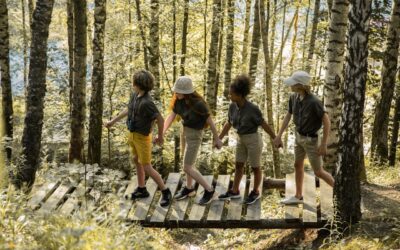
A properly designed website is crucial for businesses and brands in the current digital world. A solid site speaks of the business’s reputation and credibility. A good design will engage visitors, provide personalized experiences, and nurture leads. However, your website should first attract traffic from search engine results to achieve this.
While web design primarily involves graphic design and programming principles, developers should go beyond this. Web developers should understand the basics of SEO for website design for various reasons. SEO for web design should follow several best practices, such as providing a mobile-friendly experience, descriptive URLs, fast load times, and more. Below are some ways web design affects your site’s SEO.
1. Google Indexes Mobile-Friendly Websites
According to recent figures, over 57% of online U.S traffic comes from mobile devices, including smartphones and tablets. Mobile traffic also accounts for 52% of total online traffic worldwide. To meet the demands of mobile users, Google introduced mobile-first indexing in 2018.
With this, Google reviews mobile versions of websites before indexing or ranking the website. This means that mobile-friendliness affects your website’s performance on Google in many ways. For starters, a responsive design creates a seamless user experience as your site’s content can adapt to different devices and screens.
Mobile-friendly design improves website usability, which is among the more than 200 Google ranking factors. Web designers should focus on designing websites that deliver a fast and smooth user experience on all devices.
2. Site Structure Affects Organic Clicks and Rankings
Site structure is another significant component of SEO web design. However, this is relatively simple as developers without technical tools or knowledge can execute it easily, especially on WordPress sites. Key components of website structure include:
● Navigation
Website navigation affects various key metrics, including the average page on time, engagement rate, conversion rate, and bounce rate. These elements improve search engine rankings. If web visitors can’t find what they are looking for on your website or don’t know where to go, they cannot stay on the site. Below are a few tips to improve your site’s navigation;
- Create a simple main menu
- Avoid technical jargon
- Make the main menu accessible on all pages and mobile devices
- Have a search bar
● Title tags
HTML title tags are the first element seen by web visitors on the search engine results page. They can instantly know whether your website suits their search intent. Be sure to optimize your tags strategically, as excessively optimized title tags with stuffed keywords don’t perform well.
Title tags are primarily webpage titles. The primary role of these HTML tags is to inform search engines and web visitors what to expect or find on the webpage. Since title tags show up in SERPs, they should be short, concise, and entice visitors to click through. Title tags are important for the following reasons:
- First impressions are crucial – The title tag is the first thing potential visitors will notice from search engine results. This is your best chance to create a positive first impression.
- Brand leverage – Online visitors trust brands. If your business is a household name, ensure that you display your brand name prominently in the title tag.
Also, Google and other search engines rely on the title tag and other factors to understand your webpage. Consider the following to get the most from your title tags;
- Keep your title tags short (between 50 and 60 characters)
- Start title tags with keywords
- Fix keywords naturally
- Use dividers, such as categories or locations, to separate various elements
- Use the same optimization tactics across your website
● Heading tags
Closely associated with title tags, heading tags determine your page structure and create an information hierarchy. Pairing heading tags with optimized meta descriptions, title tags, and website content make your page logical and easy for users to follow. It makes it easy for search engines to index and categorize the content.
Using heading tags effectively can boost your SEO efforts. The most important heading tag is H1, which should be optimized with major keywords. H2 and H3 should be used to break up long texts into small units that can easily be read and followed.
● Meta description
Meta descriptions provide a snippet of your webpage and entice visitors to click. Your meta description should be very informative, creatively written, and concise to win clicks. While you should include relevant keywords, they shouldn’t affect the overall readability of the meta description. Spamming elements in your meta description affects your rankings and discourages visitors from clicking the link.
● Page content
Web design for SEO also involves ensuring that you post readable, user-friendly, and thoroughly optimized web content. Website navigation tools, title tags, meta descriptions, and headers inform search engines and website visitors about your web page context. If these elements appeal to them, they will click and read your content.
Unfortunately, old tactics such as using exact matching keywords or high keyword density are no longer effective. You should optimize your keywords organically. Make good use of long-tail keywords, and conversational phrases, use synonyms, and fix them organically.
3. Optimize Images for Page Speed and Accessibility
Most web designers ignore the importance of visuals in SEO. Optimizing visuals (images and videos) in your web design significantly affects your website’s SEO, especially for online stores and bloggers. This presents an excellent opportunity to attract more traffic and increase online visibility. For this:
- Choose the right image formats – JPEG image format is good for people, places, and things, while PNG is best for transparent image backgrounds.
- Reduce image size – Large image files can slow page loads. This hurts website SEO as Google’s recent algorithms prioritize web page speed.
- Optimize images for organic search – Since Google can’t understand images or videos, it reads ALT tags and file names, which can be optimized.
Endnote
Traditionally, search engine optimization and web design were two separate aspects. However, changing algorithms have slowly blurred the lines that separated these two elements. Well-designed websites should deliver an excellent user experience, which is currently crucial to search engine optimization. Web designers should understand that these elements are intertwined, and both play significant roles in improving your website’s search engine rankings.







0 Comments